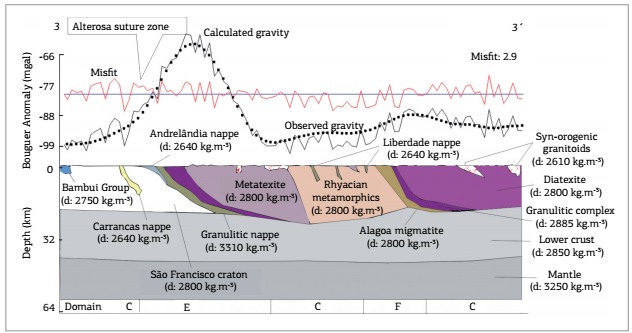ABSTRACT:
The Brasília and Ribeira fold belts have been established in south-southwestern São Francisco Craton during the Brasiliano-Pan African orogeny (0.9-0.5 Ga - Tonian to Cambrian), and played an important role in West Gondwana continent assembly. The region is given by a complex regional fold and thrust belt superposed by shearing during the orogeny late times, with superposing stress fields forming a structural interference zone. These thrust sheets encompasses assemblies from lower- to upper-crust from different major tectonic blocks (Paranapanema, São Francisco), and newly created metamorphic rocks. Re-evaluation of ground gravity datasets in a geologically constrained approach including seismology (CRUST1 model) and magnetic data (EMAG2 model) unveiled details on the deep- crust settings, and the overall geometry of the structural interference zone. The Simple Bouguer Anomaly map shows heterogeneous density distribution in the area, highlighting the presence of high-density, high metamorphic grade rocks along the Alterosa suture zone in the Socorro-Guaxupé Nappe, lying amid a series of metasedimentary thrust scales in a regional nappe system with important verticalization along regional shear zones. Forward gravity modeling favors interpretations of structural interference up North into Guaxupé Nappe. Comparison to geotectonic models shows similarities with modern accretionary belts, renewing the discussion.
KEYWORDS:
modeling; gravity; magnetics; thrust tectonics; shear zones

 Thumbnail
Thumbnail
 Thumbnail
Thumbnail
 Thumbnail
Thumbnail
 Thumbnail
Thumbnail
 Thumbnail
Thumbnail
 Thumbnail
Thumbnail
 Thumbnail
Thumbnail
 Thumbnail
Thumbnail
 Thumbnail
Thumbnail








